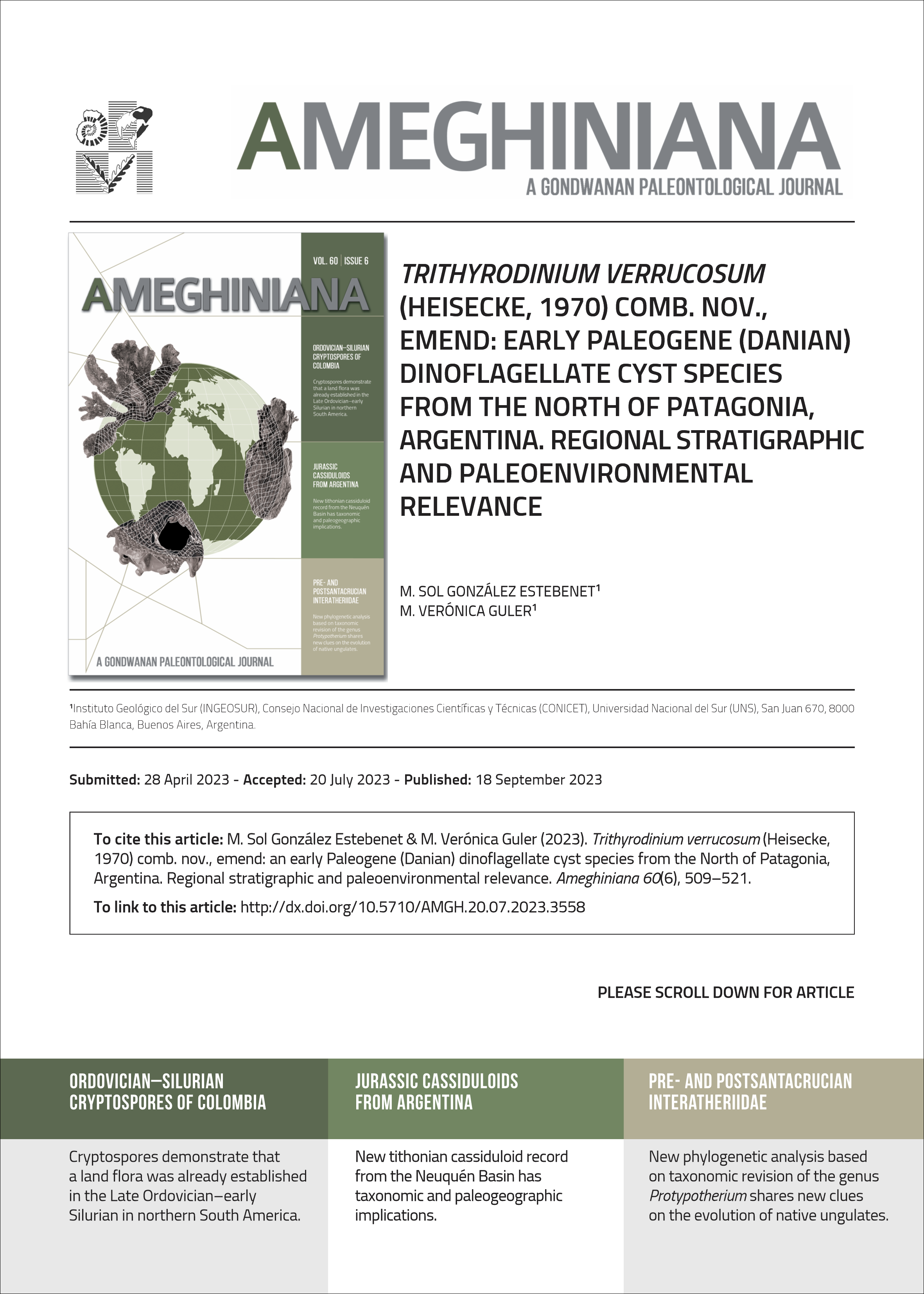TRITHYRODINIUM VERRUCOSUM (HEISECKE, 1970) COMB. NOV., EMEND: AN EARLY PALEOGENE (DANIAN) DINOFLAGELLATE CYST SPECIES FROM THE NORTH OF PATAGONIA, ARGENTINA. REGIONAL STRATIGRAPHIC AND PALEOENVIRONMENTAL RELEVANCE
DOI:
https://doi.org/10.5710/AMGH.20.07.2023.3558Keywords:
Danian, Dinoflagellate, Patagonia, Argentina, TrithyrodiniumAbstract
Trithyrodinium verrucosum comb. nov., emend. was originally described as Scriniodinium verrucosum in Danian deposits of the Roca Formation (Neuquén Basin, west Argentina) by Heisecke (1970). Well-preserved specimens recovered from the YPF.Ch.PV.es-1 borehole (Valdés Basin, east Argentina) and the re-examination of the original material allowed in this paper the emendation of the species, including recognition of an archeopyle type 3I, one of the diagnostic feature that led us to transfer the species to the genus Trithyrodinium. Based on the dinoflagellate cyst assemblages as well as the calcareous foraminifera and nannofossils content recovered from the stratigraphical interval containing Trithyrodinium verrucosum, we suggest the age of the Highest Common Occurrence (HCO) of this species not younger than middle Danian, and linked to the nannofossil Zone NP3. Hence, Trithyrodinium verrucosum may be a biostratigraphical marker for the Danian in the north of Patagonia, and the HCO is potentially useful for regional (inter-basinal) correlation of early Paleocene chronostratigraphical units from the south Atlantic basins. Also, the peak abundance of Trithyrodinium verrucosum in association with warm-water taxa (e.g., Trithyrodinium evittii) might have occurred during globally warming episodes in the Danian.

Additional Files
Published
Issue
Section
License
Authors publishing in Ameghiniana have the option of making their article freely available online. Authors opting for the Open Access must pay a fee of $300 (US dollars) to cover article-processing costs and to ensure the article is made open access. Please contact the Production Team after the acceptance of your manuscript if you are interested in making your article Open Access. This option implies by default a license Creative Commons Attribution Non-Commercial-NoDerivs License (CC BY NC ND). If your funding institution requires a different licensing option please communicate this to the Production Team after the acceptance of your manusctipt.










